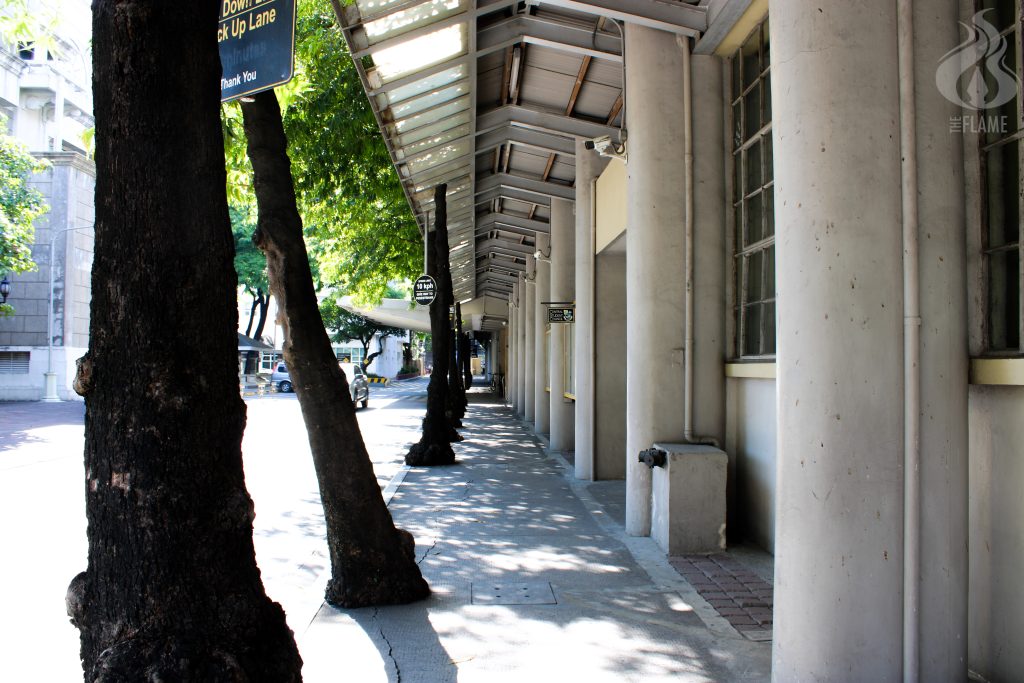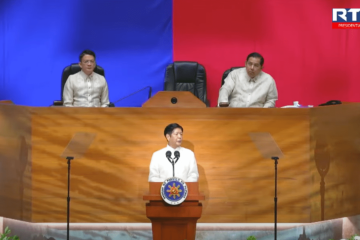by AUBREY SHANE LIM

THE UNIVERSITY’S onsite to online class ratio for the incoming semester will be determined by each college’s respective academic units and staff, according to the Office of the Vice-Rector for Academic Affairs.
“Academic units shall engage their academic staff in determining this combination and arranging the schedule of classes moving forward,” Vice-Rector for Academic Affairs Prof. Cheryl Peralta told The Flame in an email interview.
“We shall maintain the principle of constructive alignment as our guide in determining the best combination of onsite and online hours to accomplish the intended learning outcomes of each course,” she added.
The Commission on Higher Education (CHEd) recently issued a memorandum requiring higher learning institutions to conduct at least 50% of their learning hours onsite starting next term.
The rest of the contact hours may be delivered through other flexible learning methods like self-paced printed or online learning modules, synchronous or asynchronous learning sessions and remote guided peer learning approaches, CHed said.
The memorandum prohibits higher educational institutions from implementing full distance learning without the approval of the commission.
“For HEIs (higher educational institutions) that will opt to deliver their degree programs in hybrid learning modality, at least 50% of the total contact time should be spent on onsite learning experiences,” CHed Memorandum No. 16 issued last November 11 read.
Laboratory classes and on-the-job training programs should also be conducted onsite.
Peralta said the claim that UST won’t shift to a 50-50 hybrid learning until Academic Year (AY) 2023-2024 is “incorrect.”
According to her, the second term of academic year 2022 to 2023 would be used as a “transitory period” in implementing hybrid learning, following the University’s Enriched Virtual Mode of instruction.
“In the second term, we do have a number of programs that will already be implementing courses that will entail 50% or more of the class hours conducted onsite,” she said.
These courses would still be using the UST Cloud Campus for activities conducted online, Peralta added.
In its memorandum, CHED said the impact of resuming on-site learning on the overall well-being of higher education learners “cannot be overemphasized even in situations where emerging technologies, modalities, and methodologies of learning have been rapidly developed and implemented.”
Higher educational institutions are required to submit to CHed regional offices their plans towards transitioning to hybrid or onsite learning at least one month before the opening of their classes. F




[…] Last month, Vice-Rector for Academic Affairs Prof. Cheryl Peralta told The Flame that the academic units and staff of colleges would determine the onsite to online class ratio for this ter… […]
[…] HEIs are given the option to deliver their degree programs through onsite learning or hybrid learning modality starting the second semester of this year. UST Vice-Rector for Academic Affairs Prof. Cheryl Peralta previously told The Flame the onsite-online class ratio would be determined by the academic units. […]
[…] Academic units will continue determining the onsite to online classes ratio based on the intended learning outcomes, available facilities, and availability of qualified academic staff. F […]
[…] Academic units will continue determining the onsite to online classes ratio based on the intended learning outcomes, available facilities, and availability of qualified academic staff. F […]